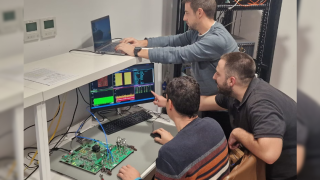For generations, fairy-tale princesses have lingered peacefully in remote towers; today, their every move is broadcast in real time, in high-definition, live around the world. The royal wedding of Prince William and Kate Middleton at Westminster Abbey on April 29th is expected to attract 2 billion viewers or more. How will London’s networks survive?
While over 750 million watched the wedding of Prince Charles and Lady Diana Spencer in 1981, the multimedia audience for this event is expected to be significantly bigger. Some in the US are touting it as the “largest non-baseball event of the year,” so it must be big. An estimated 8,000 TV and radio presenters will be reporting from London, and around 140 outside broadcast trucks with satellite uplinks will be parked nearby. Six US and Canadian national broadcasters will be using Level 3’s network to provide live, HD coverage; feeds of the ceremony will be sent over Level 3’s transatlantic routes to broadcasters’ headquarters, from where the video will be sent out to viewers. Meanwhile, the wedding will also be streamed live on YouTube’s ‘The Royal Channel’.
Things could have been even more data intensive. The BBC and BSkyB held months of talks with the royals in the hope of broadcasting the wedding in 3D, although these plans were eventually scrapped by the Palace, supposedly due to the intrusively large recording equipment needed. But for all of the scheduled coverage, there may be a bigger problem. Virgin Media Business has predicted that, with over a million people expected to visit London on the day, around 374,000 of them will be using smartphones to post video and photos. If they each post or text two minutes of video and two photos, 58 terabits of data will be sent from a localised spot. Will London’s network be able to cope? Prince William may not be the only one on his knees on the happy day...




